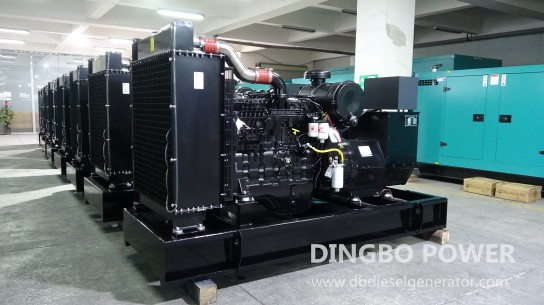Generators produce vibration during operation, which not only causes noise pollution, but also leads to damage and wear of the equipment's components over time. To reduce the generator vibration, one of the most frequently used methods is installing vibration dampening mounts. Read on and learn how to choose anti vibration mounts for diesel generator sets.
What is an anti-vibration mount for diesel generator?
Anti vibration mounts for diesel generators are fastened to gensets - usually on the bottom - to eliminate vibration and noise. They act as a buffer between the generator and its foundation and efficiently absorb shocks and vibrations. The mounts are designed to prevent damage and noise to equipment and the surfaces they rest on.

What material is used for anti vibration mounts? Typically, they are made of natural rubber or a combination of rubber and other materials. In general, rubber, or thermoplastic elastomer (TPE) is the best vibration damping material. Rubber vibration mounts are particularly effective in preventing the transfer of vibrations that machines generate. TPE has good tear and abrasion resistance, which makes it one of the most effective materials for vibration damping.
What are the benefits of anti-vibration mounts?
It’s important to select appropriate generator anti vibration mounts because a vibration reduction up to 95% is typically achieved when using vibration absorbing pads underneath the generator. The mounts can absorb and reduce the vibration energy before it can be transmitted to the surrounding environment, preventing the premature wear and tear of the parts and equipment and prolonging the life of the generator. They plays an important role in maintaining equipment integrity, safety, and performance.
Mechanical vibrations produced by generators can’t be avoided, but can be reduced. Excessive generator vibrations may cause potential damage to the nearby structures and sensitive equipment. Anti-vibration mounts reduce vibration levels and provide you with a more comfort and safer operational environment. The mounts can also prevent the machines from tipping over, enhancing the stability of diesel generators. Decreased vibration levels can improve overall performance of generators and save costs.
How do I choose an anti-vibration mount for diesel generator?
To select the proper anti vibration mounts for your diesel generator, there are a number of factors to consider. The following are some of the considerations:
The size and weight of the equipment
Different types of diesel generators will require different solutions. Generally, the larger and heavier the machine, the larger the mounts or the higher the number of mountings will be required to reduce the machine vibrations.
The weight of the mounts needed
For example, if the machine weighs 400 kg, you'll want four anti vibration mounts with a weight of 100 kg each to distribute the weight evenly. Please be noted that the weight on the diesel genset may not be evenly distributed. In this case, you will need heavier mounts where it’s needed.
The running speed of the generator
The levels of vibration is greatly affected by the generator RPM (Revolutions Per Minute). Diesel generators have a wide range of RPM ratings, with most falling between 1,500 and 3,000 RPM. Thus, you also need to consider the machine’s speed when selecting the mounts required to dampen the vibrations.
The static deflection of your diesel genset
Static deflection refers to how much your mount will compress under the weight of the machine. The more static deflection, the more work the mount has to do.
The operating environment
The environmental factors is also a consideration. Environmental factors such as UV light, the minimum and maximum ambient temperature near the equipment and the degree of corrosivity can also determine the type of anti vibration mount. You need to use the right anti vibration mounts to retain their performance characteristics in hot and cold environments and avoid failing prematurely.
Dingbo Power is a professional manufacture of diesel generators. With almost 20 years of experience in the industry, we can offer you a range of products for a wide variety of uses. We provide diesel generators from major manufacturers including Perkins, Cummins, Volvo, Yuchai, Shangchai, Weichai, etc. Our products come in different sizes and types, which are equipped with the best vibration isolation mounts to suit your requirements. Feel free to contact us with any questions, concerns, or inquiries to learn more about the products & services we provide.
Comments
Post a Comment